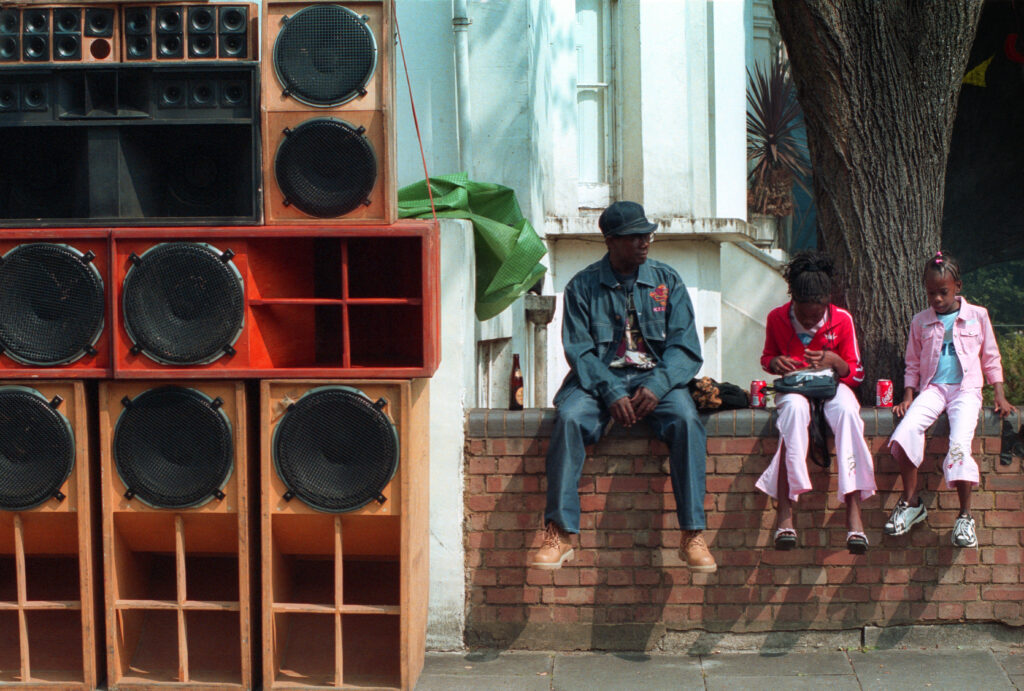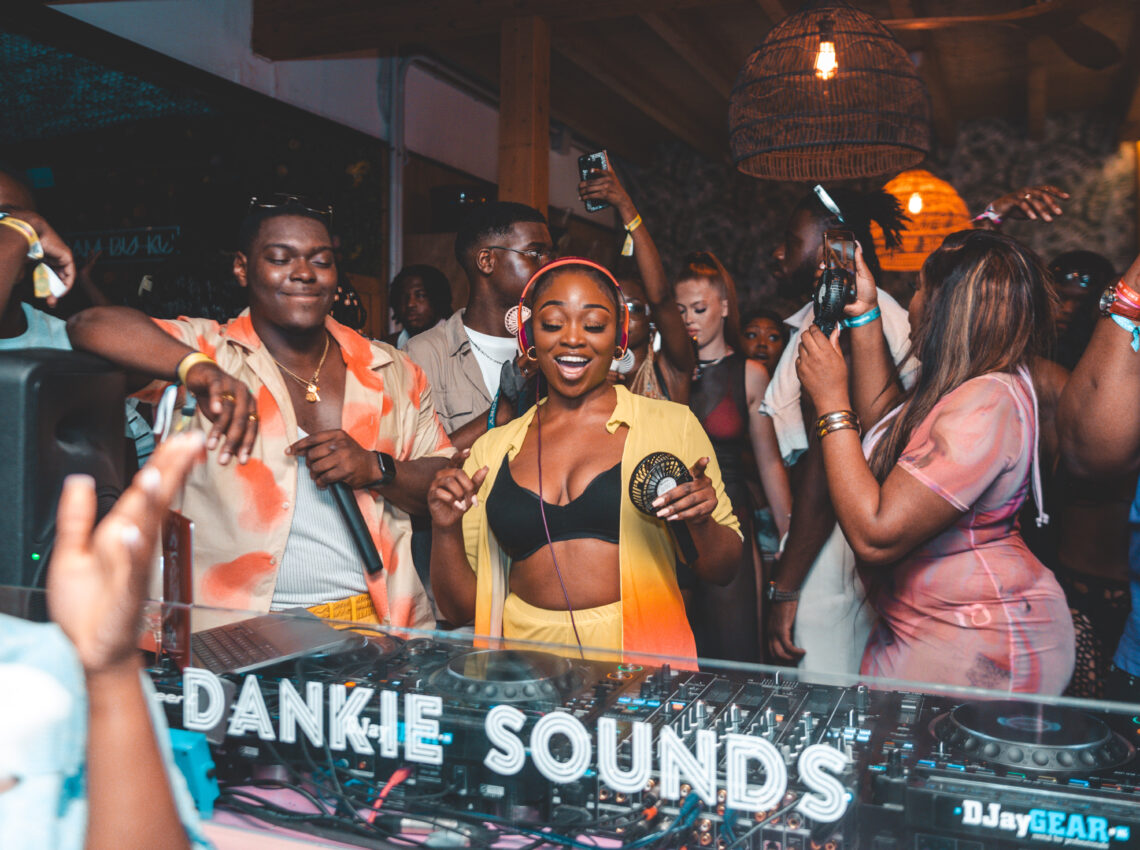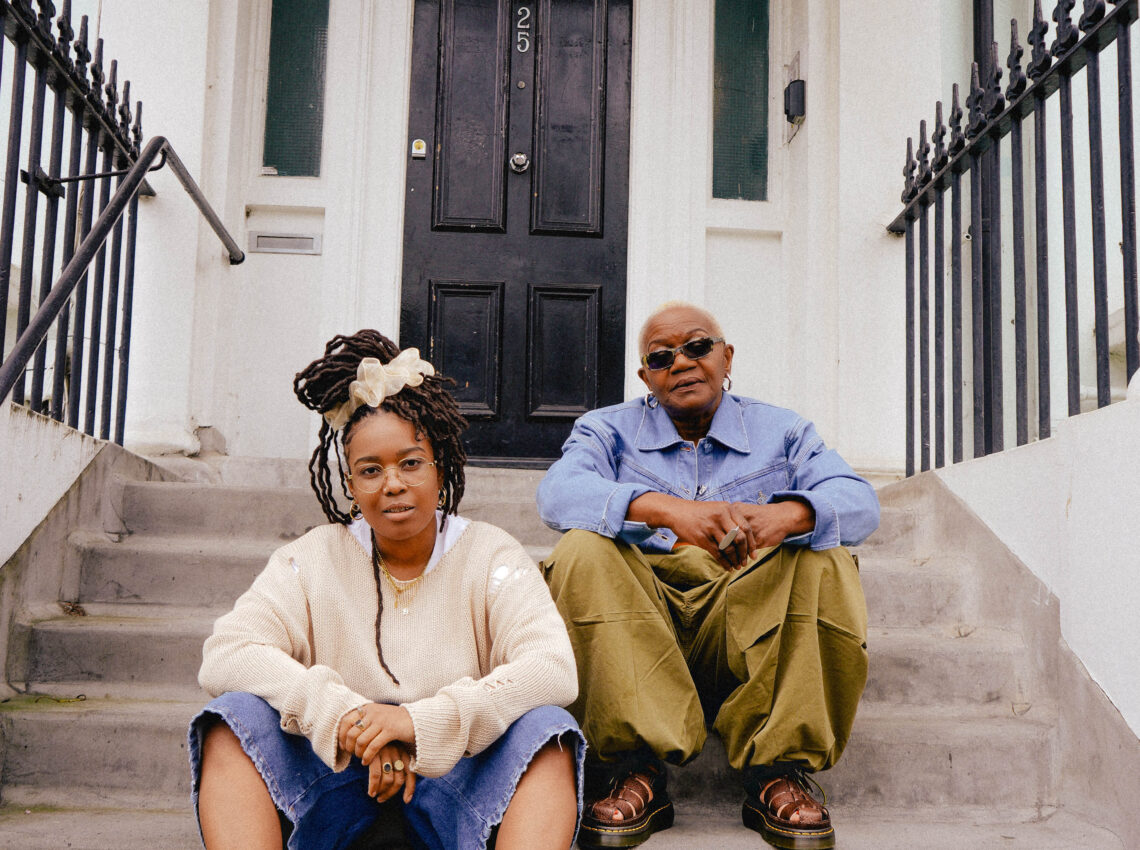The first exhibition to document 500 years of Black music in Britain – open now at British Library
Beyond the Bassline (26 April – 26 August 2024) at the British Library is the first major exhibition to document the 500-year musical journey of African and Caribbean people in Britain. Inspired by the British Library’s sound archive, the exhibition explores the people, spaces, and genres that have transformed the landscape of British music.
Traversing musical genres, from classical, gospel, and jazz through to reggae, jungle, and afro swing, Beyond the Bassline charts the influence of Black British musicians, creatives, and entrepreneurs on popular music since the 16th century. It also considers the role emerging technologies and the internet have played in creating, listening to, and sharing music.
Sunday night at the Blue Note in Hoxton, London, circa 1995. Photograph by Eddie Otchere
The exhibition spotlights the spaces – physical, digital, and symbolic – that have cultivated creative expression and inspired a number of Black British music genres, from The Reno in Manchester, Bristol’s Bamboo Club, Scottish club night The Reggae Klub and The Four Aces in London, to carnivals, community centres and record shops across the country.
To accompany Beyond the Bassline there will be a rich programme of public events, including live performances, club takeovers by No Signal (26 April), Touching Bass (3 May and 12 July) and Queer Bruk (21 June), as well as in conversation events with eminent singer-songwriters Eddy Grant (26 April) and Joan Armatrading (18 June), with more to be revealed.
Photographer: Terna Jogo, Beyond the Bassline Exhibition
Curated by Dr Aleema Gray at the British Library in collaboration with Associate Professor Mykaell Riley at the University of Westminster, Beyond the Bassline follows a three-year partnership to research, foreground, and reposition six centuries of African musical contributions to the UK.
We had the incredible opportunity of interviewing Dr Aleema to find out more!
What motivated you to focus on a 500-year span of Black music in Britain, and what challenges did you encounter in researching and presenting such a vast timeline?
The idea was the outcome of research put forward by the Black Music Research Unit at the University of Westminster, led by Associate Professor Mykaell Riley. It was driven by an attempt to situate what is often seen as popular culture as part of a broader history of African presence in Britain. Documenting Black histories across five centuries comes with many challenges because there is a lack of archival and material references. Our stories have been historically marginalised which means a lot of the work we have been doing is speculating, questioning, and mapping what might have been possible.
Credit National Portrait Gallery, Smithsonian Institution to the souvenir postcard of the Fisk Jubilee Singers, 1875
Can you share some key themes that emerged while curating the exhibition, and how did you decide on the narrative structure to convey the evolution of Black music over the centuries?
There has been a lot of important threads that still characterise contemporary Black music and culture in Britain – unapologetic creativity, innovation and style. Britain has a specific relationship with Blackness and tells a unique story. I thought the best way to bring the story together was through looking at the history spatially – how do certain spaces and places tell a particular story about Black music? The exhibition starts in The Ocean and ends up in Cyberspace and within each of the spaces, a particular theme is highlighted. While The Ocean looks at travelling cultures, inherited traditions and movement, Cyberspace highlights a contemporary narrative, placing specific attention on the role of technology and our increasingly virtual world.

Map by John Dee, about 1580. From the archive of the British Library (Cotton MS Augustus I.i.1.)
In terms of representation, how did you ensure diversity in the artists and genres included, and were there any specific criteria you used for their selection?
Taking a spatial approach allowed us to do this. It is impossible to focus on every Black artist across 500 years, but we tried to draw on multiple streams of Black experience through looking at Black British music as part of a community story. While we do focus on genres, from Classical music and Jazz to Jungle and Grime, and artists who have broken conventions such as John Blanke, Pauline Black and Rebel MC, it was also important to look at Black British music through more underground and creative spaces. We consider, for example, how music has been experienced, platformed and embodied across time from club spaces and festivals, to online radios stations.
Were there any significant turning points or pivotal moments in the history of Black music in Britain that you wanted to emphasize, and why?
There have been many turning points across the century and the exhibition tries to hold space for all of them. The advancements in technology – for example, when music was first recorded, telecommunications and the internet – have driven key turning points in terms of how people are participating in and changing music. But there are also more political and cultural ones that underpin Black Britishness – empire, citizenship and migration – which has significantly shaped how Britishness has been understood, accepted and challenged.
Basing Street Studio. Image (c) Adrian Boot & urbanimage.tv, All Rights Reserved
How did you incorporate interactive or multimedia elements to enhance the visitor’s experience and engagement with the exhibition?
As it is a music exhibition, sound is a very important aspect of the visitor experience and we wanted to take them on a journey through the various spaces. In each section there is a soundscape that compliments the exhibits. We have also worked with artists and platforms across the UK to respond to the British Library’s collections and build their own sonic and creative pieces that respond to the exhibition. For example, we worked with Jukebox Collective, a community-rooted, youth-led group based in Cardiff, who produced a film responding to themes of movement and water in The Ocean section. We have also commissioned Touching Bass, who have produced a 5-screen film installation speculating on reparative futures and Black British music, directed by Tayo Rapoport and Rohan Ayinde. Alongside the collaborations there are archival footage delving deep into jazz and jungle, as well as a record shop interactive.
Photographer: Terna Jogo, Beyond the Bassline Exhibition
Given the vast time span, did you notice any recurring themes or patterns in the evolution of Black music in Britain, and how did you balance historical accuracy with storytelling?
Beyond the Bassline is a conversation that invites people to reflect on the Black music in Britain and, as such, it was important to consider the relationship between the past, present and futures. As it is a topic that is about community and creativity, it was equally important to think about emotions. I was keen to make sure the text and interpretation captures this, so the language we use is a personal one – “I” and “we” for example, but it is also situates people in a particular time and space.
Steel Pulse photo session in Handsworth Birmingham 1978 (c) Adrian Boot & urbanimage.tv, All Rights Reserved
Were there any specific challenges faced by Black musicians in Britain that you wanted to highlight, and how did you approach addressing the socio-political context within the exhibition?
The history comes in full circle and such we can see recurring themes – DIY, innovation, survival – against the odds. The struggles and challenges still continue, but I wanted to make sure that this show is one that captures a living history – not just one of struggle or challenges. One that documents things that have been historically under-documented in heritage spaces. One that is about presence. One that says here we are. We are here.

Can you share some anecdotes or stories that didn’t make it into the exhibition but added depth to your understanding of Black music history in Britain?
There were so many! Artists who, although not Black British, share a strong relationship with Britain – Paul Robeson, the American bass-baritone concert artist and activist, for example. We wanted to be intentional in terms of the story the Library could tell based on the collection. For instance, we did not include details of Soundsystem operators and DJs. Soundsystem is such a huge part of Black British music cultures – but we knew we couldn’t do it justice in the limited space – so we explored Soundsystem through the lens of making music. Luckily there is an exhibition book and an exciting line up of events that will cover some of these topics. There are so many legacy projects that will emerge from the work and I am excited to see how it is taken up when the exhibition closes.

Notting Hill Carnival. Image (c) Adrian Boot, All Rights Reserved
In your opinion, what role does this exhibition play in promoting inclusivity and understanding the cultural impact of Black musicians on the broader British music landscape?
The word that comes to mind is heritage. This is about documenting heritage and contributing to research. A lot of the things we are exploring are part of popular culture, but there is a disconnect in terms of how this popular culture is reflected in academia, research, collections and heritage, which this exhibition and programme hopes to address. We are bridging the gap between community culture and heritage and I hope it will encourage future generations to think critically about how our stories are preserved.
Minuets &c. &c. Compos’d by an African, London, 1780. From the archive of the British Library (b53b.1(1.).)
There will be panel displays and events at public libraries across the UK, arranged through the Living Knowledge Network, with each library’s collection, regional connections, and local music scene at the core, to help tell a national story about Black music in Britain.
Beyond the Bassline tickets are on general sale from today (beyondthebassline.seetickets.com/) and cost £10-15 with concessions available. There will be Pay What You Can days on the first Wednesday of every month
The exhibition is accompanied by a season of in-person and online events which you can register for here https://beyondthebasslineevents.seetickets.com/search/all
This includes The Beat Goes On: Black Voices in the British Music Industry an insightful panel event on 7 May with a great line up, including Lisa Maffia and Guvna B and more discussing the challenges and realities of the industry




![ZINO VINCI’S ‘FILTHY & DISGUSTING’EP BRINGS YOU TO THE CORE OF THE ARTIST [@ZinoVinci]](https://guap.co/wp-content/uploads/2023/10/Zino-4.jpg)





